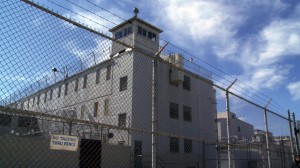 A new study from Stanford Law School's Three Strikes Project and the NAACP Legal Defense and Education Fund says that 1,000 inmates sentenced to life imprisonment under California's three-strikes law have been released since an initiative softened the statute last year.
A new study from Stanford Law School's Three Strikes Project and the NAACP Legal Defense and Education Fund says that 1,000 inmates sentenced to life imprisonment under California's three-strikes law have been released since an initiative softened the statute last year.
The most attention-getting part of the report released today is that, so far, most of the former prisoners have stayed out of trouble.
The report found that only 2 percent of the inmates released under last year's Proposition 36 have returned to prison or jail. That’s far below the statewide average recidivism rate of 16 percent.
Stanford law Professor Michael Romano, who co-authored the study, says the record so far is strikingly positive.
"For every one story of somebody being charged with a new crime, there are literally 100 people who have been released from prison, reunited with their families, and are doing extraordinarily well," he said.